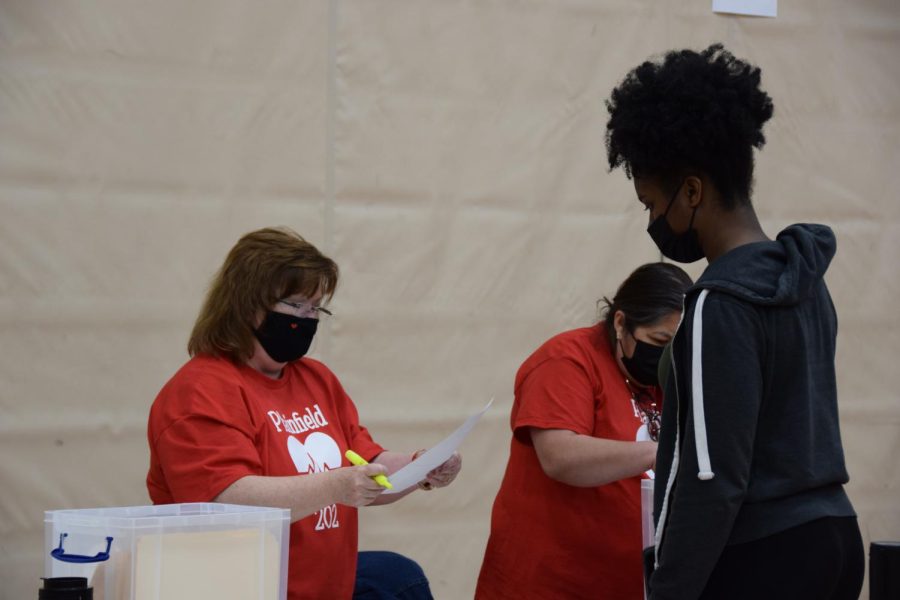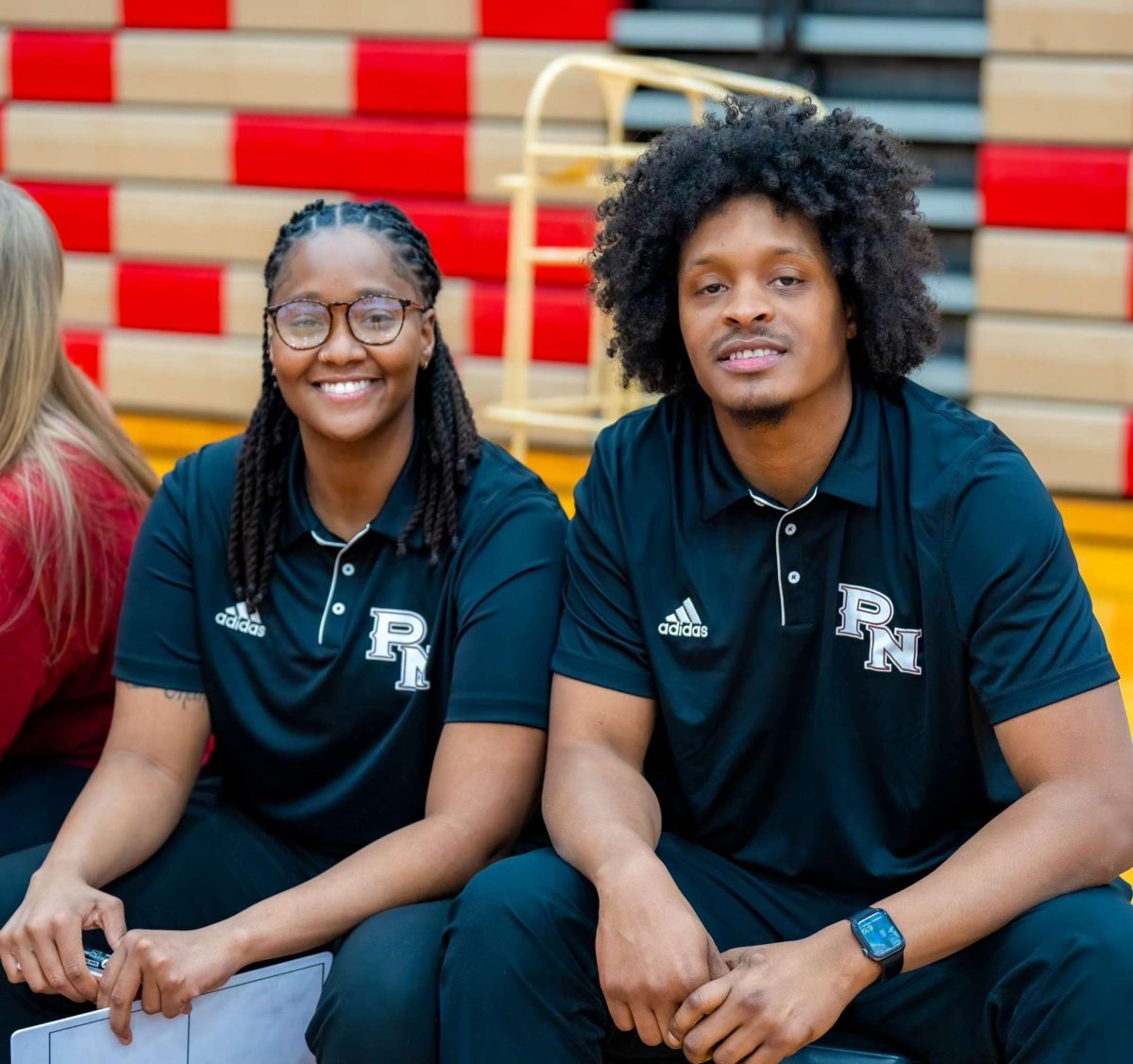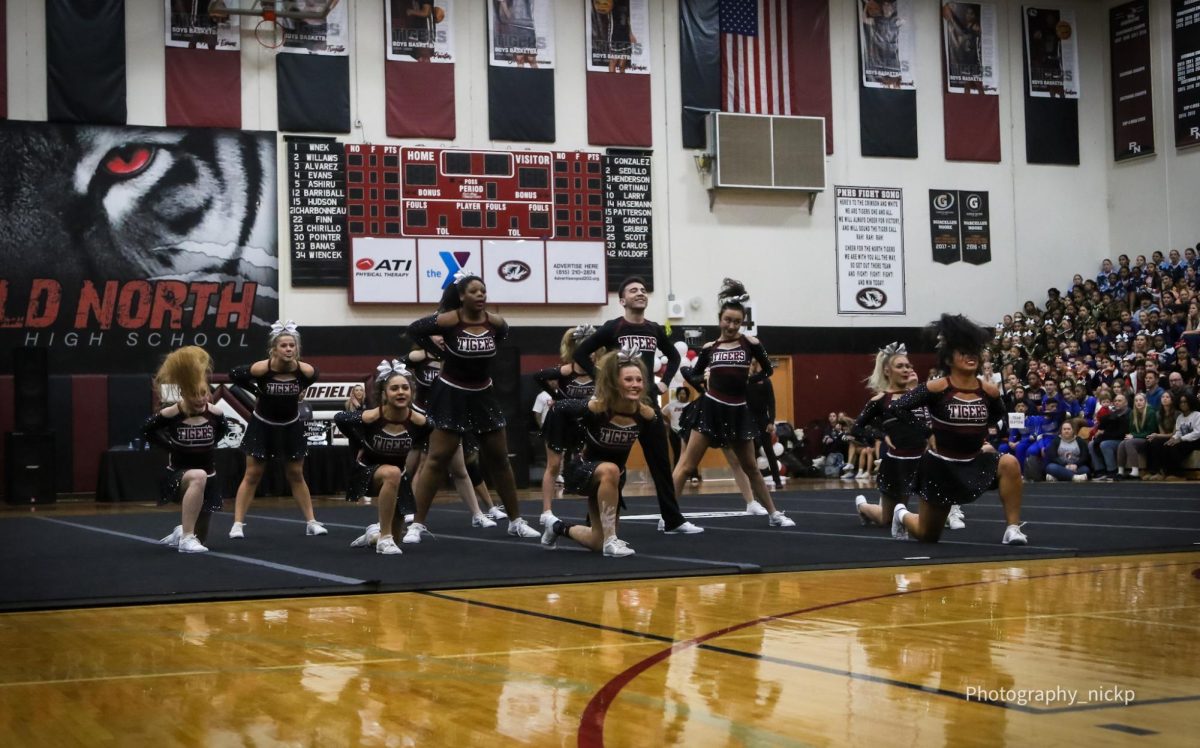Students participate in heart screening
Volunteers Cindy Westfield (left) and Oraluia (right) check-in senior Neze E. Kowa to the Young Heart’s For Life screening. Photo by Julia Gerard
May 13, 2022
Many students participated in North’s third annual heart screening conducted by Young Hearts For Life on April 12.
Founded in 2006 by Dr. Joseph Marek, Young Hearts For Life is an organization whose goal is to detect unknown heart diseases in all students. By doing this, students can get the help they need. According to the YH4L website, “Each week, sudden cardiac death claims the lives of more than 60 young adults in the United States. To date, over 2400 students screened through YH4L have been identified as ‘at risk’ students.”
“[Young Hearts For Life] Provides a free EKG test to those students that had parent permission,” PE division chair Lynette Bayer said. “It can detect a possible unknown heart condition.”
The last screening at North took place in 2019, in which more than 1,400 students participated. The ECG’s were able to detect six students with unknown heart conditions. This year, Marek and Dr. Mohamed Sinno screened 1174 students.
Bayer reflects on the goals of the event.
“[Young Heart’s For Life wants] to identify as many students as possible that may have a heart condition they may not be aware of,” Bayer said.
Testing took place in the fieldhouse. Students were given a mask then guided to a check-in table manned by trained volunteers to make sure they were properly registered with parental authorization. Students who were not pre-registered were still able to be screened.
“If they are not [on the list] they can call their parents and get permission to have the opportunity to participate,” parent volunteer Heather Aimone said.
After registration verification, students were placed in a room for electrode conductive pad placement to measure cardiac electrical activity and then administered electrocardiography.
“For the screening, the ladies in the room attached wires to the stickers on my wrist, ankles and chest,” senior Kotryna Ruttkauskas said. “I just laid on the bed while the reading was happening, and it was over in less than a minute.”
In order to complete the procedure, parent volunteers monitored the student and worked with the electrocardiogram machine.
“My role specifically was to attach 10 leads for each participant,” parent volunteer Carlmel McDonald said. “We had them lay still for 20 seconds while the machine ran a reading.” Volunteers were also required to take a training course before the event, and procedural roles were assigned.
“They had us do an hour’s training to understand the importance of the screening,” McDonald said. “We also learned about the different responsibilities to completing a screening regardless of our role that day.”
Due to the usefulness of the procedure, students who participated in this year’s screening recommended it to other students.
“I think that it is important for students to do this when they get the chance because it is free and can detect possible heart diseases that you may not know of,” senior Lindsey McDonald said.
Screening volunteers also recognized the value of early detection of certain serious heart conditions.
“I know that it is doing good by finding possible issues in young kids,” Aimone said. “It feels good to do something for the community.”
The screening was originally set for January but was rescheduled twice due to weather and attendance issues.
“Young Hearts for Life provided our students a wonderful opportunity to screen for a possible irregular heartbeat,” Principal Ross Draper said. “I am so grateful that the organization was able to reschedule and return this spring.”







